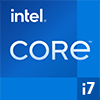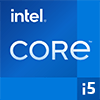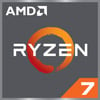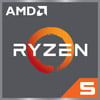
Intel Core i7-1165G7 vs AMD Ryzen 7 4700U
Last updated:
CPU comparison with benchmarks
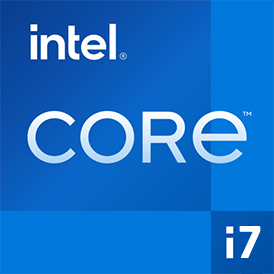
|
 |
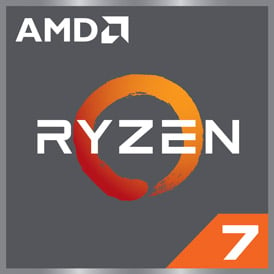
|
| Intel Core i7-1165G7 | AMD Ryzen 7 4700U | |
CPU comparisonIntel Core i7-1165G7 or AMD Ryzen 7 4700U - which processor is faster? In this comparison we look at the differences and analyze which of these two CPUs is better. We compare the technical data and benchmark results.
The Intel Core i7-1165G7 has 4 cores with 8 threads and clocks with a maximum frequency of 4.70 GHz. Up to 64 GB of memory is supported in 2 memory channels. The Intel Core i7-1165G7 was released in Q3/2020. The AMD Ryzen 7 4700U has 8 cores with 8 threads and clocks with a maximum frequency of 4.10 GHz. The CPU supports up to 64 GB of memory in 2 memory channels. The AMD Ryzen 7 4700U was released in Q1/2020. |
||
| Intel Core i7 (298) | Family | AMD Ryzen 7 (67) |
| Intel Core i 1100G/11000U (19) | CPU group | AMD Ryzen 4000U (11) |
| 11 | Generation | 3 |
| Tiger Lake U | Architecture | Renoir (Zen 2) |
| Mobile | Segment | Mobile |
| -- | Predecessor | -- |
| -- | Successor | -- |
|
|
||
CPU Cores and Base FrequencyThe Intel Core i7-1165G7 has 4 CPU cores and can calculate 8 threads in parallel. The clock frequency of the Intel Core i7-1165G7 is 2.80 GHz (4.70 GHz) while the AMD Ryzen 7 4700U has 8 CPU cores and 8 threads can calculate simultaneously. The clock frequency of the AMD Ryzen 7 4700U is at 2.00 GHz (4.10 GHz). |
||
| Intel Core i7-1165G7 | Characteristic | AMD Ryzen 7 4700U |
| 4 | Cores | 8 |
| 8 | Threads | 8 |
| normal | Core architecture | normal |
| Yes | Hyperthreading | No |
| No | Overclocking ? | No |
| 2.80 GHz | Frequency | 2.00 GHz |
| 4.70 GHz | Turbo Frequency (1 Core) | 4.10 GHz |
| 4.10 GHz | Turbo Frequency (All Cores) | 3.40 GHz |
Internal GraphicsThe Intel Core i7-1165G7 or AMD Ryzen 7 4700U has integrated graphics, called iGPU for short. The iGPU uses the system's main memory as graphics memory and sits on the processor's die. |
||
| Intel Iris Xe Graphics 96 (Tiger Lake) | GPU | AMD Radeon RX Vega 7 (Renoir) |
| 0.40 GHz | GPU frequency | 0.40 GHz |
| 1.30 GHz | GPU (Turbo) | 1.60 GHz |
| 12 | GPU Generation | 9 |
| 10 nm | Technology | 7 nm |
| 4 | Max. displays | 3 |
| 96 | Compute units | 7 |
| 768 | Shader | 448 |
| No | Hardware Raytracing | No |
| No | Frame Generation | No |
| 32 GB | Max. GPU Memory | 2 GB |
| 12 | DirectX Version | 12 |
Hardware codec supportA photo or video codec that is accelerated in hardware can greatly accelerate the working speed of a processor and extend the battery life of notebooks or smartphones when playing videos. |
||
| Intel Iris Xe Graphics 96 (Tiger Lake) | GPU | AMD Radeon RX Vega 7 (Renoir) |
| Decode / Encode | Codec h265 / HEVC (8 bit) | Decode / Encode |
| Decode / Encode | Codec h265 / HEVC (10 bit) | Decode / Encode |
| Decode / Encode | Codec h264 | Decode / Encode |
| Decode / Encode | Codec VP9 | Decode / Encode |
| Decode | Codec VP8 | Decode / Encode |
| Decode | Codec AV1 | No |
| Decode / Encode | Codec AVC | Decode / Encode |
| Decode | Codec VC-1 | Decode |
| Decode / Encode | Codec JPEG | Decode / Encode |
Memory & PCIeThe Intel Core i7-1165G7 can use up to 64 GB of memory in 2 memory channels. The maximum memory bandwidth is 51.2 GB/s. The AMD Ryzen 7 4700U supports up to 64 GB of memory in 2 memory channels and achieves a memory bandwidth of up to 51.2 GB/s. |
||
| Intel Core i7-1165G7 | Characteristic | AMD Ryzen 7 4700U |
| DDR4-3200 | Memory | LPDDR4-4266, DDR4-3200 |
| 64 GB | Max. Memory | 64 GB |
| 2 (Dual Channel) | Memory channels | 2 (Dual Channel) |
| 51.2 GB/s | Max. Bandwidth | 51.2 GB/s |
| No | ECC | Yes |
| 5.00 MB | L2 Cache | -- |
| 12.00 MB | L3 Cache | 8.00 MB |
| 4.0 | PCIe version | 3.0 |
| 4 | PCIe lanes | 12 |
| 7.9 GB/s | PCIe Bandwidth | 11.8 GB/s |
Thermal ManagementThe thermal design power (TDP for short) of the Intel Core i7-1165G7 is 15 W, while the AMD Ryzen 7 4700U has a TDP of 15 W. The TDP specifies the necessary cooling solution that is required to cool the processor sufficiently. |
||
| Intel Core i7-1165G7 | Characteristic | AMD Ryzen 7 4700U |
| 15 W | TDP (PL1 / PBP) | 15 W |
| 64 W @ 28 s | TDP (PL2) | -- |
| 28 W | TDP up | 35 W |
| 12 W | TDP down | 10 W |
| 100 °C | Tjunction max. | 105 °C |
Technical detailsThe Intel Core i7-1165G7 is manufactured in 10 nm and has 17.00 MB cache. The AMD Ryzen 7 4700U is manufactured in 7 nm and has a 8.00 MB cache. |
||
| Intel Core i7-1165G7 | Characteristic | AMD Ryzen 7 4700U |
| 10 nm | Technology | 7 nm |
| Monolithic | Chip design | Chiplet |
| x86-64 (64 bit) | Instruction set (ISA) | x86-64 (64 bit) |
| SSE4.1, SSE4.2, AVX2, AVX-512 | ISA extensions | SSE4a, SSE4.1, SSE4.2, AVX2, FMA3 |
| BGA 1526 | Socket | FP6 |
| VT-x, VT-x EPT, VT-d | Virtualization | AMD-V, SVM |
| Yes | AES-NI | Yes |
| Windows 10, Windows 11, Linux | Operating systems | Windows 10, Windows 11, Linux |
| Q3/2020 | Release date | Q1/2020 |
| 426 $ | Release price | -- |
| show more data | show more data | |
Rate these processors
Average performance in benchmarks
⌀ Single core performance in 4 CPU benchmarks
⌀ Multi core performance in 7 CPU benchmarks
Cinebench R23 (Single-Core)
Cinebench R23 is the successor of Cinebench R20 and is also based on the Cinema 4 Suite. Cinema 4 is a worldwide used software to create 3D forms. The single-core test only uses one CPU core, the amount of cores or hyperthreading ability doesn't count.
|
|
Intel Core i7-1165G7
4C 8T @ 4.70 GHz |
||
|
|
AMD Ryzen 7 4700U
8C 8T @ 4.10 GHz |
||
Cinebench R23 (Multi-Core)
Cinebench R23 is the successor of Cinebench R20 and is also based on the Cinema 4 Suite. Cinema 4 is a worldwide used software to create 3D forms. The multi-core test involves all CPU cores and taks a big advantage of hyperthreading.
|
|
Intel Core i7-1165G7
4C 8T @ 4.10 GHz |
||
|
|
AMD Ryzen 7 4700U
8C 8T @ 3.40 GHz |
||
Geekbench 5, 64bit (Single-Core)
Geekbench 5 is a cross plattform benchmark that heavily uses the systems memory. A fast memory will push the result a lot. The single-core test only uses one CPU core, the amount of cores or hyperthreading ability doesn't count.
|
|
Intel Core i7-1165G7
4C 8T @ 4.70 GHz |
||
|
|
AMD Ryzen 7 4700U
8C 8T @ 4.10 GHz |
||
Geekbench 5, 64bit (Multi-Core)
Geekbench 5 is a cross plattform benchmark that heavily uses the systems memory. A fast memory will push the result a lot. The multi-core test involves all CPU cores and taks a big advantage of hyperthreading.
|
|
Intel Core i7-1165G7
4C 8T @ 4.10 GHz |
||
|
|
AMD Ryzen 7 4700U
8C 8T @ 3.40 GHz |
||
Geekbench 6 (Single-Core)
Geekbench 6 is a benchmark for modern computers, notebooks and smartphones. What is new is an optimized utilization of newer CPU architectures, e.g. based on the big.LITTLE concept and combining CPU cores of different sizes. The single-core benchmark only evaluates the performance of the fastest CPU core, the number of CPU cores in a processor is irrelevant here.
|
|
Intel Core i7-1165G7
4C 8T @ 4.70 GHz |
||
|
|
AMD Ryzen 7 4700U
8C 8T @ 4.10 GHz |
||
Geekbench 6 (Multi-Core)
Geekbench 6 is a benchmark for modern computers, notebooks and smartphones. What is new is an optimized utilization of newer CPU architectures, e.g. based on the big.LITTLE concept and combining CPU cores of different sizes. The multi-core benchmark evaluates the performance of all of the processor's CPU cores. Virtual thread improvements such as AMD SMT or Intel's Hyper-Threading have a positive impact on the benchmark result.
|
|
Intel Core i7-1165G7
4C 8T @ 4.10 GHz |
||
|
|
AMD Ryzen 7 4700U
8C 8T @ 3.40 GHz |
||
Cinebench R20 (Single-Core)
Cinebench R20 is the successor of Cinebench R15 and is also based on the Cinema 4 Suite. Cinema 4 is a worldwide used software to create 3D forms. The single-core test only uses one CPU core, the amount of cores or hyperthreading ability doesn't count.
|
|
Intel Core i7-1165G7
4C 8T @ 4.70 GHz |
||
|
|
AMD Ryzen 7 4700U
8C 8T @ 4.10 GHz |
||
Cinebench R20 (Multi-Core)
Cinebench R20 is the successor of Cinebench R15 and is also based on the Cinema 4 Suite. Cinema 4 is a worldwide used software to create 3D forms. The multi-core test involves all CPU cores and taks a big advantage of hyperthreading.
|
|
Intel Core i7-1165G7
4C 8T @ 4.10 GHz |
||
|
|
AMD Ryzen 7 4700U
8C 8T @ 3.40 GHz |
||
iGPU - FP32 Performance (Single-precision GFLOPS)
The theoretical computing performance of the internal graphics unit of the processor with simple accuracy (32 bit) in GFLOPS. GFLOPS indicates how many billion floating point operations the iGPU can perform per second.
|
|
Intel Core i7-1165G7
Intel Iris Xe Graphics 96 (Tiger Lake) @ 1.30 GHz |
||
|
|
AMD Ryzen 7 4700U
AMD Radeon RX Vega 7 (Renoir) @ 1.60 GHz |
||
Blender 3.1 Benchmark
In the Blender Benchmark 3.1, the scenes "monster", "junkshop" and "classroom" are rendered and the time required by the system is measured. In our benchmark we test the CPU and not the graphics card. Blender 3.1 was presented as a standalone version in March 2022.
|
|
Intel Core i7-1165G7
4C 8T @ 4.10 GHz |
||
|
|
AMD Ryzen 7 4700U
8C 8T @ 3.40 GHz |
||
Estimated results for PassMark CPU Mark
Some of the CPUs listed below have been benchmarked by CPU-monkey. However the majority of CPUs have not been tested and the results have been estimated by a CPU-monkey’s secret proprietary formula. As such they do not accurately reflect the actual Passmark CPU mark values and are not endorsed by PassMark Software Pty Ltd.
|
|
Intel Core i7-1165G7
4C 8T @ 4.10 GHz |
||
|
|
AMD Ryzen 7 4700U
8C 8T @ 3.40 GHz |
||
CPU-Z Benchmark 17 (Multi-Core)
The CPU-Z benchmark measures a processor's performance by measuring the time it takes the system to complete all benchmark calculations. The faster the benchmark is completed, the higher the score.
|
|
Intel Core i7-1165G7
4C 8T @ 2.80 GHz |
||
|
|
AMD Ryzen 7 4700U
8C 8T @ 2.00 GHz |
||
Cinebench 2024 (Single-Core)
The Cinebench 2024 benchmark is based on the Redshift rendering engine, which is also used in Maxon's 3D program Cinema 4D. The benchmark runs are each 10 minutes long to test whether the processor is limited by its heat generation.
|
|
Intel Core i7-1165G7
4C 8T @ 4.70 GHz |
||
|
|
AMD Ryzen 7 4700U
8C 8T @ 4.10 GHz |
||
Cinebench 2024 (Multi-Core)
The Multi-Core test of the Cinebench 2024 benchmark uses all cpu cores to render using the Redshift rendering engine, which is also used in Maxons Cinema 4D. The benchmark run is 10 minutes long to test whether the processor is limited by its heat generation.
|
|
Intel Core i7-1165G7
4C 8T @ 4.70 GHz |
||
|
|
AMD Ryzen 7 4700U
8C 8T @ 4.10 GHz |
||
CPU-Z Benchmark 17 (Single-Core)
The CPU-Z benchmark measures a processor's performance by measuring the time it takes the system to complete all benchmark calculations. The faster the benchmark is completed, the higher the score.
|
|
Intel Core i7-1165G7
4C 8T @ 4.10 GHz |
||
|
|
AMD Ryzen 7 4700U
8C 8T @ 3.40 GHz |
||
Cinebench R15 (Single-Core)
Cinebench R15 is the successor of Cinebench 11.5 and is also based on the Cinema 4 Suite. Cinema 4 is a worldwide used software to create 3D forms. The single-core test only uses one CPU core, the amount of cores or hyperthreading ability doesn't count.
|
|
Intel Core i7-1165G7
4C 8T @ 4.70 GHz |
||
|
|
AMD Ryzen 7 4700U
8C 8T @ 4.10 GHz |
||
Devices using this processor |
|
| Intel Core i7-1165G7 | AMD Ryzen 7 4700U |
| Unknown | ASUS ZenBook 14 Acer Swift 3 |
Comparison of the two processors
The Intel Core i7-1165G7 mobile processor from the 3rd quarter of 2020 is based on Tiger Lake UP3 technology. It has 4 cores and a maximum clock rate of up to 4.7 GHz. The CPU based on 10nm technology supports up to 64 GB DDR4-3200 or LPDDR4X-4266 RAM.With the help of the PCIe 4.0 standard, the latest hardware components can also be used. In addition, 5.00 MB L2 cache and 12.00 MB L3 cache are used. ECC compatibility is not offered.
With a TDP (PL1) of 15 W, both processors are on the same level.
The integrated graphics of the 12 GPU generation is based on the Intel Iris Xe Graphic96 technology. The clock is 0.4-1.3 Ghz and up to 16 GB of shared memory is supported. The Intel graphics card supports up to three monitors and has 96 graphics units and 768 shader units. Thanks to DirectX 12 support, the integrated graphics card is a loyal companion for all everyday tasks. However, if the processor is used in a gaming notebook, a dedicated graphics solution is usually used anyway, which normally makes it superfluous.
The AMD Ryzen 7 4700U notebook processor has been on the market since Q1 2020. Although it does not have the same clock frequencies as its counterpart from Intel, it does have 8 processor cores. These clock from 2.00 - 4.10 GHz. Like the Intel Core i7-1165G7, DDR4-3200 are supported. However, up to a maximum of 32 GB. In most cases, however, this should be sufficient for mobile use. In a direct comparison, the L3 cache is below that of the Intel. In addition, the processor is only connected with PCIe 3.0. For this purpose, 12 PCIe lines are connected. The Intel only has 4 lines.
Thanks to the Renoir ZEN 2 architecture, this mobile CPU is suitable for all tasks that exist for a notebook.
A direct comparison shows where the strengths of the individual CPUs lie. While the Intel Core i7 outperforms the AMD Ryzen 7 in the single-core benchmark thanks to the high maximum clock, it looks different in the multi-core benchmarks. This shows the strength of AMD, which is also evident in the desktop CPUs.
Popular comparisons containing this CPUs
back to index




